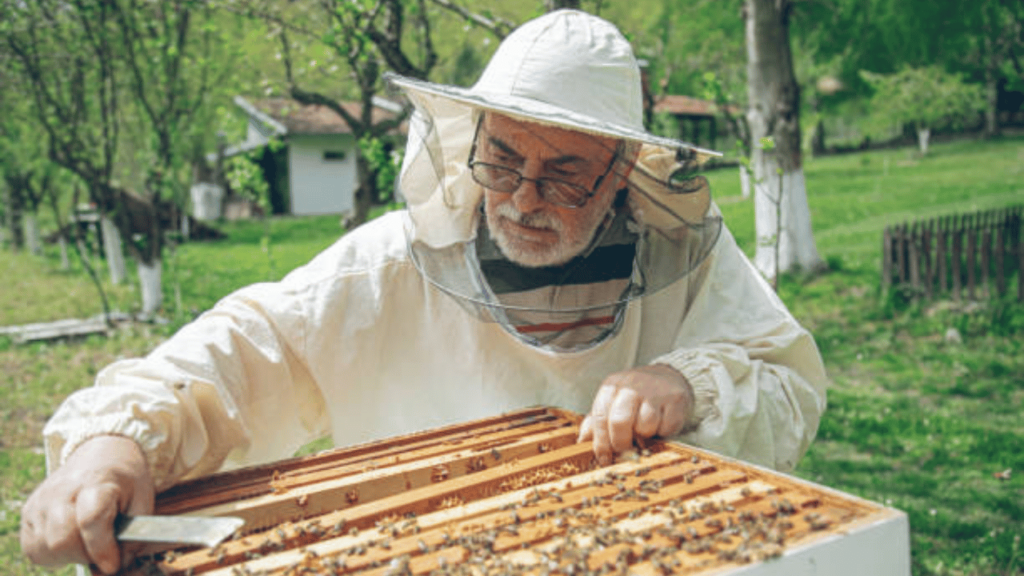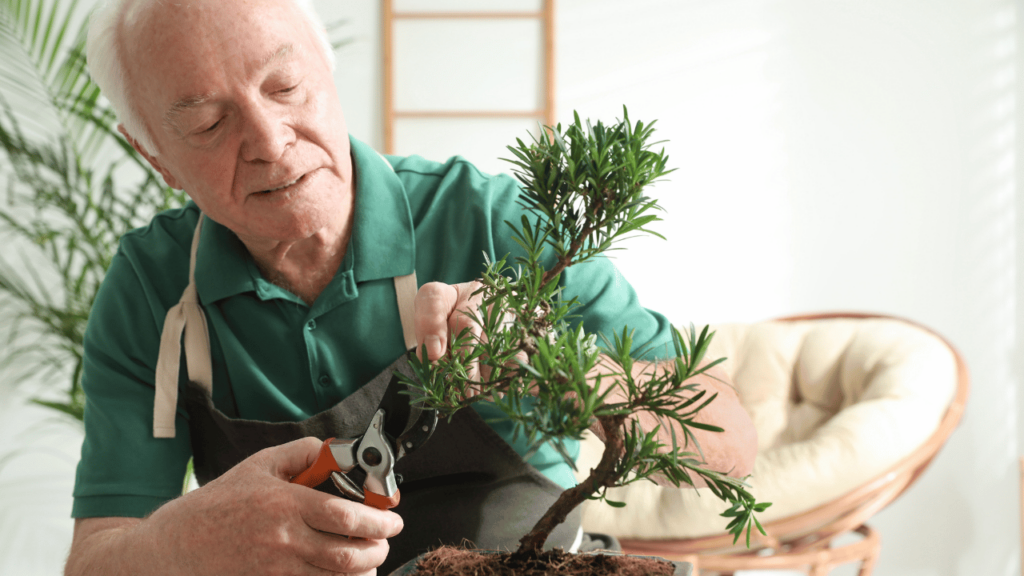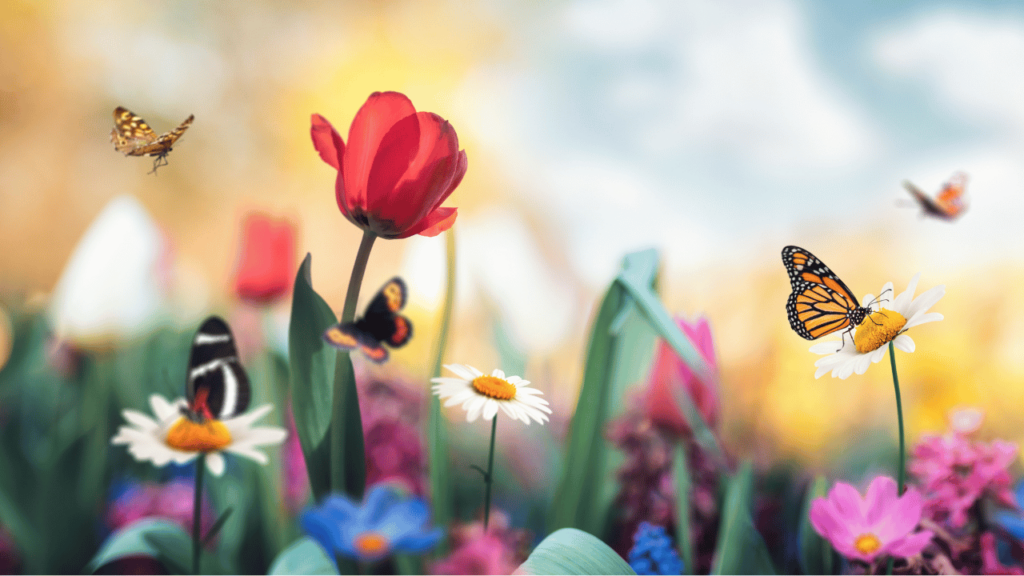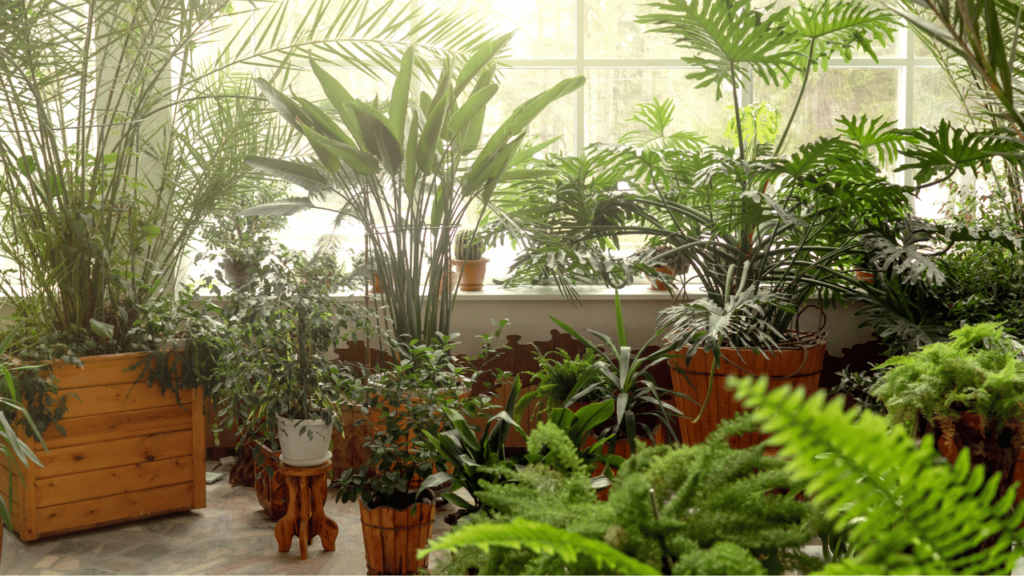Explore Nature’s Pantry: A Senior’s Guide to Foraging

Foraging is a wonderful way to enjoy the great outdoors, connect with nature, and discover edible treasures right in your backyard or nearby parks. This timeless activity combines light exercise, mental engagement, and the joy of bringing nature’s bounty to your table. Whether you’re looking for a new hobby or a way to make your meals more interesting, foraging is an adventure worth trying. Sponsored by SeniorHMOplans.com, this guide will teach you how to forage safely and responsibly while reaping the benefits of this rewarding pastime. Why Try Foraging? Foraging offers numerous benefits for seniors: Light Exercise: Walking and bending as you forage keeps you active without straining your body. Mental Engagement: Learning to identify plants sharpens your mind and enhances your knowledge of the natural world. Healthy Eating: Incorporating fresh, foraged foods into your diet adds variety and nutrients. Cost-Effective: Enjoy free, delicious ingredients while reducing your grocery bill. Getting Started with Foraging Before you begin foraging, follow these steps to ensure a safe and enjoyable experience: Research Local Rules: Check local laws and regulations to ensure foraging is allowed in your chosen area. Choose Safe Locations: Parks, nature trails, and your own backyard are great places to start. Avoid areas near roads or treated with pesticides. Use Guides: Invest in a good field guide or download a foraging app to help identify plants. Top Edible Plants for Beginners Start with these easy-to-recognize, safe-to-eat options: Dandelions: Leaves, flowers, and roots are edible and rich in nutrients. Perfect for teas, salads, or sautéed dishes. Wild Berries: Look for safe varieties like blackberries, raspberries, and elderberries. Avoid berries you cannot confidently identify. Wild Herbs: Mint, thyme, and oregano are often found growing naturally and are perfect for cooking or teas. Essential Foraging Tools Equip yourself with these simple tools to make foraging easier and safer: Basket or Bag: To collect your finds. Scissors or Knife: For clean cuts and easier collection. Gloves: Protect your hands from thorns or irritants. Notebook or App: Document your finds and keep notes for future reference. Safety and Sustainability Tips Foraging responsibly ensures safety for you and sustainability for the environment: Know What You’re Picking: Always double-check plant identification to avoid toxic varieties. Leave Enough Behind: Harvest only a small portion to preserve the plant population and support local wildlife. Avoid Pesticides: Steer clear of plants growing near treated areas. Cooking and Preserving Your Foraged Finds Once you’ve collected your treasures, try these tips for enjoying and preserving them: Simple Recipes: Use dandelion greens in salads, wild berries in jams, or herbs in teas and soups. Preservation Tips: Dry herbs for long-term use, freeze berries, or pickle roots for extended freshness. Share Your Bounty: Host a meal with family or friends using your foraged ingredients. Conclusion: Embrace the Joy of Foraging Foraging is more than just a hobby—it’s a journey of discovery, relaxation, and connection to nature. By exploring your local environment and learning about edible plants, you’ll enjoy the physical, mental, and culinary benefits that come with this timeless activity. Visit SeniorSearching.com for more inspiring ideas to enrich your retirement. And remember, SeniorHMOplans.com is here to support your healthy, active lifestyle so you can enjoy adventures like foraging to the fullest. Ready to explore nature’s pantry? Grab a basket and get started!
Buzz into Retirement: How to Start Backyard Bee-Keeping as a Senior

Retirement is the perfect time to embrace new hobbies that bring joy, relaxation, and a connection to nature. Bee-keeping is one such activity that offers all these benefits and more. From supporting the environment to harvesting your own honey, this fulfilling hobby is gaining buzz among seniors looking for meaningful ways to spend their time. Sponsored by SeniorHMOplans.com, this guide will help you take the first steps toward becoming a backyard bee-keeper. Let’s get started! Why Bee-Keeping is Perfect for Seniors Bee-keeping combines mindfulness, sustainability, and tangible rewards, making it an ideal hobby for seniors. Here’s why: Connect with Nature: Caring for bees helps you engage with the natural world and appreciate its rhythms. Support the Environment: Your hive will contribute to local pollination, boosting the health of plants and flowers. Harvest Sweet Rewards: Enjoy fresh honey and beeswax—perfect for gifts, cooking, or crafting. Stay Active and Engaged: Light physical activity and problem-solving make this hobby great for the body and mind. Getting Started with Bee-Keeping Starting your own hive requires some basic equipment and preparation. Here’s what you’ll need: Hive Kit: A starter hive includes the box, frames, and foundation for your bees. Protective Gear: A bee suit, gloves, and veil will keep you safe while tending the hive. Tools: Essential tools include a smoker (to calm the bees) and a hive tool for inspections. Bees: Purchase your bees from a reputable supplier; beginner-friendly species like Italian bees are gentle and productive. Step-by-Step Guide to Setting Up Your Hive Choose the Right Location: Place your hive in a sunny, sheltered area with easy access to flowers and water. Assemble Your Hive: Follow the instructions in your kit to set up the hive. Position it off the ground for ventilation and safety. Introduce Your Bees: Transfer your bees carefully into the hive. Use a smoker to keep them calm. Monitor and Maintain: Check the hive regularly for health and activity. Feed the bees sugar water in the early stages to help them settle. Caring for Your Bees Bee-keeping requires ongoing care to ensure your colony thrives: Feeding: Supplement their diet with sugar water during times of low nectar availability. Inspection: Conduct routine checks for pests, diseases, and queen activity. Seasonal Care: Prepare your hive for winter by insulating it and ensuring the bees have enough honey stored. Benefits of Bee-Keeping The rewards of bee-keeping extend far beyond honey: Mental Well-being: Working with bees promotes mindfulness and reduces stress. Community Connection: Join local bee-keeping groups to share tips and experiences. Eco-Impact: Your hive helps sustain local ecosystems and supports global bee populations. Conclusion: Start Your Buzz-Worthy Hobby Today Bee-keeping is more than a hobby; it’s a way to give back to nature while enjoying a meaningful, hands-on activity. Whether you’re harvesting honey, caring for your bees, or simply watching them thrive, this hobby offers endless rewards. Visit SeniorSearching.com for more exciting ideas and resources to enrich your retirement. And remember, SeniorHMOplans.com is here to support your health and happiness as you explore new adventures. Ready to create your hive? Let’s get buzzing!
Discover the Art of Bonsai: A Perfect Hobby for Seniors

Retirement is the ideal time to explore new hobbies that bring peace, creativity, and fulfillment. If you’ve ever admired the beauty of a miniature bonsai tree, you might be surprised to learn that creating and caring for one is easier than you think. Bonsai gardening offers a calming and rewarding way to connect with nature, and it’s perfect for seniors looking for a hobby that blends artistry with relaxation. Sponsored by SeniorHMOplans.com—because enjoying your hobbies should come with peace of mind—this beginner’s guide will help you embark on your bonsai journey with confidence. Why Bonsai is an Ideal Hobby for Seniors Bonsai gardening isn’t just about growing plants; it’s about shaping a living piece of art. Here are a few reasons why bonsai is a fantastic hobby for seniors: Encourages mindfulness and patience: Trimming and caring for a bonsai tree helps you stay focused and relaxed. Accessible to all: Whether you live in a house with a yard or an apartment, bonsai trees thrive in small spaces. Low physical exertion: Bonsai gardening is gentle on the body, requiring minimal bending or lifting. Getting Started: Tools and Tree Selection Starting your bonsai journey doesn’t have to be expensive. Here’s what you’ll need: Basic Tools: Pruning shears, small scissors, and a watering can. A Bonsai Starter Kit: Many kits include a small tree, soil, and a pot—everything you need to begin. Tree Types for Beginners: Consider juniper, ficus, or Chinese elm—these species are hardy and easy to shape. Local garden centers or online retailers often offer affordable bonsai kits tailored for beginners. Step-by-Step Guide to Bonsai Care Creating and maintaining a bonsai tree is straightforward when you follow these simple steps: Choose the Right Spot: Place your bonsai in a location with plenty of natural light, avoiding direct sunlight. Water Regularly: Keep the soil moist but not waterlogged. Check daily, as bonsai trees can dry out quickly. Prune and Shape: Use pruning shears to trim excess branches and shape the tree to your desired style. This is where your creativity shines! Re-pot Occasionally: Every 2–3 years, re-pot your bonsai into fresh soil to encourage healthy growth. Protect from Pests: Keep an eye out for insects and use gentle treatments to maintain your tree’s health. Health Benefits of Bonsai Gardening Beyond its aesthetic appeal, bonsai gardening offers several health benefits: Stress Reduction: The act of caring for a living plant promotes relaxation and mindfulness. Enhanced Focus: Shaping and pruning a bonsai tree requires concentration, which can improve cognitive skills. Connection to Nature: Spending time with plants has been shown to boost mood and overall well-being. Join a Community of Bonsai Enthusiasts Bonsai gardening is a hobby you can enjoy alone or share with others. Many communities and online forums exist where you can connect with fellow enthusiasts, exchange tips, and showcase your creations. Conclusion: Start Your Bonsai Journey Today Exploring the art of bonsai is a fulfilling way to bring beauty and tranquility into your life. Whether you’re looking for a solo hobby or a way to connect with nature, bonsai gardening offers endless rewards. Visit SeniorSearching.com for more enriching hobbies and tips tailored for seniors. And remember, SeniorHMOplans.com is here to support your health and happiness every step of the way. Ready to get started? Your bonsai journey awaits!
Bring Nature to Your Doorstep: How to Create a Butterfly Garden at Home

Transform your backyard into a haven for beautiful butterflies with a few simple steps. SeniorSearching.com brings you this guide to enhance your outdoor space, brought to you by SeniorHMOplans.com—helping you stay healthy and active at 65 and beyond. Explore more inspiring articles on SeniorSearching.com, your trusted source for senior-friendly content. Main Body: Why Create a Butterfly Garden? Beautifies your yard and supports pollinators. A relaxing and rewarding activity perfect for retirees. Step-by-Step Guide: Choose the Right Plants: Highlight native flowers and shrubs that attract butterflies. Add a Water Source: Discuss simple DIY puddling stations. Design for Success: Tips on arranging plants for visual appeal and butterfly accessibility. Maintenance Tips: Watering schedules and pest management techniques tailored for seniors. Enjoy the Benefits: Improved mental well-being and a stronger connection with nature. Call to Action: Discover more helpful articles on SeniorSearching.com, and let SeniorHMOplans.com guide you toward a vibrant lifestyle with the right Medicare Advantage plan for you.
Getting Started with Bird Watching

Discover the Joy of Bird Watching Bird watching, or birding, is one of the most relaxing and rewarding hobbies you can enjoy. It’s perfect for seniors looking to spend time outdoors, connect with nature, and find a peaceful yet stimulating activity. With just a little effort and the right tools, you can turn your backyard, a local park, or even a simple walk into a delightful birding adventure. Here’s everything you need to know to get started: Choose the Right Equipment Binoculars: A good pair of lightweight, easy-to-use binoculars is essential. Look for ones with a magnification of 7x or 8x for clear and steady viewing. Field Guide: A bird identification book or mobile app tailored to your region will help you recognize different species. Notebook: Keep a journal to jot down your observations, sketch birds, or note their behaviors. Start in Your Backyard Bird watching doesn’t require travel or special locations. Set up a bird feeder or birdbath in your backyard to attract local species. Common backyard visitors include cardinals, finches, and sparrows. Adding native plants and flowers can also make your space more inviting to birds. Learn to Identify Birds Focus on key features like size, color, and distinctive markings. For example, a robin’s red chest or a blue jay’s vibrant feathers are easy identifiers. Use your field guide or app to match what you see. Visit Local Parks or Nature Reserves Expand your bird-watching horizons by visiting parks, wildlife sanctuaries, or wetlands. These locations often attract a wider variety of species. Bring along water and comfortable shoes for an enjoyable outing. Connect with the Birding Community Joining a local birding group can enrich your experience. Many groups organize bird-watching walks, share tips, and foster a sense of community among nature lovers. Check out websites or community boards for events near you. Sponsored by SeniorHMOplans.com Enjoying hobbies like bird watching is a wonderful way to enhance your well-being. But it’s equally important to ensure your healthcare needs are covered as you approach retirement. SeniorHMOplans.com is here to help you navigate Medicare Advantage plans so you can focus on what matters most. Visit our website to explore your options today. Visit SeniorSearching.com for More Tips! Looking for more senior-friendly hobbies and activities? SeniorSearching.com offers a wealth of articles tailored to your interests, from gardening to travel. With many engaging articles, it’s your ultimate resource for discovering new ways to enjoy life after 65. Start your bird-watching adventure today!
The Basics of Creating an Indoor Fairy Garden for Relaxation

Retirement is the perfect time to explore hobbies that combine creativity and relaxation. One delightful activity gaining popularity among seniors is crafting indoor fairy gardens. These enchanting miniature landscapes offer a way to bring the beauty of nature indoors while expressing creativity and creating a soothing atmosphere. What is an Indoor Fairy Garden? An indoor fairy garden is a small, whimsical garden designed with tiny plants, miniature decorations, and fairy-themed items. It’s a creative way to connect with nature without needing outdoor space, making it perfect for apartments, smaller homes, or any indoor setting. Sponsored by SeniorHMOplans.com: “Good health ensures you can enjoy hobbies and activities that enrich your life. Visit SeniorHMOplans.com to find a Medicare Advantage plan tailored to your needs.” Why Create an Indoor Fairy Garden? Building a fairy garden is more than just a hobby; it’s an opportunity to relax, spark your imagination, and create something beautiful. Benefits include: Stress Relief: The process of crafting and nurturing plants is therapeutic. Creative Outlet: Each garden is unique, reflecting your personality and style. Connection to Nature: Even without a backyard, you can enjoy the beauty of greenery. Materials You’ll Need Starting an indoor fairy garden doesn’t require expensive supplies. Here’s what you’ll need: Container: A shallow pot, wooden box, or even a repurposed dish. Potting Soil: Suitable for small plants like succulents or moss. Miniature Plants: Consider succulents, ferns, or moss for easy maintenance. Decorative Miniatures: Tiny houses, fairy figures, bridges, and animals. Natural Elements: Pebbles, shells, bark, or small twigs. Basic Tools: Gloves, a small trowel, and tweezers for precision. Step-by-Step Guide to Building Your Fairy Garden Choose Your Container: Select a container that fits your space and design vision. Ensure it has drainage holes or add a layer of stones for water management. Add Soil: Fill your container with potting soil, leaving space for plants and decorations. Position Your Plants: Arrange your plants thoughtfully, creating a balance between greenery and open spaces for decorations. Add Miniatures: Place fairy houses, bridges, or other whimsical elements among the plants. Incorporate Natural Materials: Use pebbles, bark, or twigs to enhance the natural look. Final Touches: Adjust the arrangement until it feels magical and harmonious. Tips for Maintenance Lighting: Place your garden in a well-lit area but avoid direct sunlight to prevent plant damage. Watering: Water sparingly; most fairy garden plants prefer slightly dry conditions. Pruning: Trim plants regularly to maintain the design. Creative Ideas for Fairy Gardens Seasonal Themes: Decorate your garden for holidays or seasons. Storytelling Gardens: Create a narrative with your design, such as a fairy village or forest. Personalized Touches: Incorporate sentimental items or handmade decorations. Frequently Asked Questions Q: Can I make a fairy garden with artificial plants? A: Yes! Artificial plants are a great option for a low-maintenance garden. Q: Where can I find miniature decorations? A: Look for miniatures at craft stores, online retailers, or repurpose small toys and trinkets. Q: Is it expensive to start a fairy garden? A: Not at all. Many materials can be found at home or purchased affordably. Turn Fairy Gardening into a Social Activity Creating fairy gardens can also be a social event: Host a Crafting Party: Invite friends or family to build gardens together. Join a Community: Look for local crafting groups or online forums to share ideas and inspiration. Gift Your Garden: Create fairy gardens as unique and personal gifts. Resources and Inspiration For more ideas, visit crafting websites or explore social media platforms for fairy garden inspiration. Check out SeniorSearching.com for other creative hobbies and activities designed for seniors. Sponsored Reminder: “Crafting indoor fairy gardens is a delightful way to relax and stay creative. Ensure you have the health to enjoy hobbies like this by visiting SeniorHMOplans.com for personalized Medicare Advantage plans.” Conclusion Crafting an indoor fairy garden is a magical way to combine creativity and relaxation. It’s simple to start, affordable, and endlessly customizable. Whether you keep it for yourself or share it with loved ones, an indoor fairy garden brings beauty and joy into any space. Start creating yours today and let your imagination bloom!
How to Grow Mushrooms Indoors for Beginners

Growing mushrooms indoors is a rewarding and fascinating hobby that anyone can try. For seniors, it’s an accessible way to stay engaged with nature and enjoy the satisfaction of harvesting your own food. With a little patience and the right setup, you can grow delicious mushrooms in the comfort of your home. At SeniorSearching.com, we’re here to share ideas that enrich your golden years with fulfilling activities. And because good health is essential for enjoying life, we’re proudly sponsored by SeniorHMOplans.com, helping seniors find the best health plans to support their vibrant lifestyles. Why Grow Mushrooms? Mushrooms offer numerous benefits beyond their culinary uses. They are: Nutrient-Rich: Packed with vitamins, minerals, and antioxidants, mushrooms are a fantastic addition to a healthy diet. Easy to Grow: Require minimal space and simple materials, making them ideal for seniors in apartments or homes with limited garden space. Sustainable: Growing mushrooms is an eco-friendly hobby that can recycle organic waste like coffee grounds. Engaging: Watching mushrooms grow is a unique and enjoyable process that provides a sense of accomplishment. Did you know mushrooms are considered one of the oldest forms of cultivated food? Ancient cultures valued mushrooms not only for their flavor but also for their medicinal properties. Today, growing your own mushrooms combines the joy of gardening with the satisfaction of producing healthy food. Getting Started: What You Need Here’s what you’ll need to grow mushrooms indoors: Mushroom Spawn or Growing Kit: Mushroom spawn is like the seed of the mushroom, while kits come with everything pre-prepared. Popular beginner options include oyster, shiitake, or white button mushrooms. Kits are an excellent way to learn the basics without much guesswork. Substrate: Mushrooms grow on materials called substrates. Common substrates include straw, coffee grounds, or sawdust, depending on the type of mushroom. Each substrate has unique benefits, and experimenting with them can be part of the fun. Containers: Use plastic bins, buckets, or trays with small holes for airflow. Containers can be as simple as an old Tupperware box or as sophisticated as a custom-built grow tent. Moisture and Humidity: Mushrooms need a damp environment. Use a spray bottle to keep the substrate moist and maintain humidity. A humidifier can also help if you’re growing mushrooms in a dry climate. A Dark, Cool Spot: Mushrooms thrive in dim, cool areas like basements, closets, or under kitchen counters. Maintaining a steady temperature of around 55-75°F is key. Step-by-Step Guide to Growing Mushrooms Prepare the Substrate: Sterilize the substrate to eliminate unwanted bacteria. Boil or steam straw or sawdust, then let it cool. This step is crucial for creating an environment where your mushrooms can thrive. Inoculate the Substrate: Mix the mushroom spawn into the substrate. Spread the mixture evenly in your container, ensuring the spawn has good contact with the substrate for successful colonization. Create the Ideal Environment: Cover the container with a loose lid or cloth to allow airflow. Place it in a cool, dark spot and maintain humidity by misting daily. Proper airflow prevents mold while keeping conditions optimal for growth. Wait for Mycelium Growth: After 1-2 weeks, you’ll see white threads (mycelium) spreading through the substrate. This is a sign your mushrooms are starting to grow. Watching this transformation is one of the most rewarding parts of mushroom cultivation. Encourage Fruiting: Once the mycelium has colonized the substrate, expose the container to indirect light and slightly cooler temperatures to encourage mushroom caps to form. This stage can take another week or two, depending on the mushroom variety. Harvest: Mushrooms are ready to harvest when the caps fully open but before they release spores. Gently twist and pull them off the substrate. Harvesting at the right time ensures the best flavor and texture. Creative Ways to Use Your Mushrooms Freshly grown mushrooms can be used in a variety of delicious dishes. Here are some ideas: Sautéed Mushrooms: A simple side dish with garlic and herbs. Mushroom Soup: Creamy and comforting, perfect for chilly evenings. Stuffed Mushrooms: A crowd-pleaser for gatherings or family dinners. Mushroom Stir-Fry: Add a savory touch to your favorite vegetables. Dehydrated Mushrooms: Preserve your harvest by drying mushrooms for later use. Tips for Success Start with a Kit: For beginners, mushroom kits simplify the process and increase your chances of success. Maintain Consistent Conditions: Check daily to ensure proper humidity and temperature. A consistent environment is the key to healthy growth. Experiment with Varieties: Once comfortable, try different mushroom types to expand your knowledge and palate. Reuse and Recycle: Some substrates can be reused for additional growth cycles. Compost spent substrates to enrich your garden soil. Common Challenges and Solutions Q: Why aren’t my mushrooms growing? A: Check the humidity level and ensure the substrate remains damp but not waterlogged. Consistency is crucial. Q: How do I prevent mold? A: Sterilize the substrate thoroughly before inoculation and ensure good airflow to reduce contamination risks. Q: Can I grow mushrooms without a kit? A: Yes! With the right materials, you can grow mushrooms using mushroom spawn and a homemade substrate setup. Start small and build confidence. The Joy of Mushroom Growing Growing mushrooms is more than just a hobby—it’s a journey into the fascinating world of fungi. Each step, from preparing the substrate to harvesting your first crop, offers unique rewards. For seniors, this activity provides mental stimulation, physical engagement, and a sense of connection to nature. Discover More at SeniorSearching.com Growing mushrooms indoors is a fulfilling and practical hobby that connects you to nature while providing nutritious food. Explore more tips and inspiring ideas at SeniorSearching.com, your trusted resource for seniors. And remember, good health ensures you can enjoy life’s simple pleasures. Visit SeniorHMOplans.com today to find a health plan that supports your journey toward wellness and happiness!

